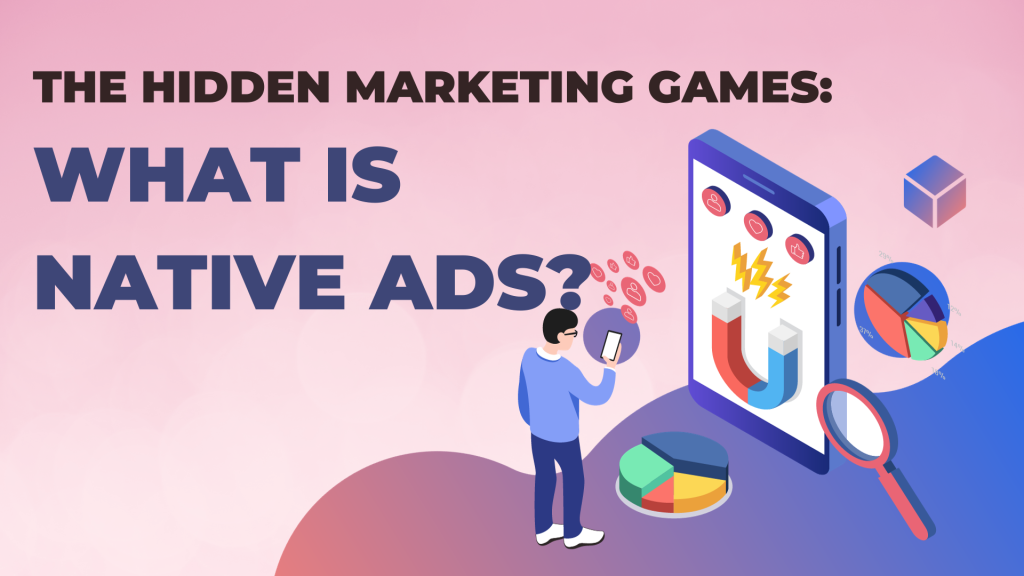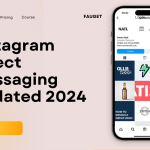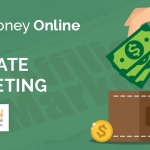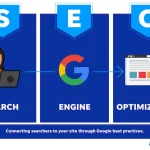The Hidden Marketing Game: What Are Native Ads?
what are native advertisements?
native advertising definition?
native advertising definition : Native ads, short for “native advertisements,”. It seamlessly blends with platform content for a natural and engaging user experience. Instead of traditional advertising methods, native ads blend seamlessly into the user experience, providing value and relevance. how native advertising works
Do you know clearly what are Native Ads?
It’s simple to understand. Native advertising offers a non-disruptive advertising experience. Recently, digital marketing trends have been fleeting. However, every so often, a hidden treasure is found. One of these treasures is “native advertising” – a type of advertising that has quietly transformed how ads are created.
Examples of native advertising include sponsored articles, promoted social media posts, in-feed ads, and recommended content widgets on websites.
According to a report by eMarketer, native advertising in the United States alone brought in more than $52 billion in 2022, about 64% of all digital display ad spending. This remarkable growth is not coincidental; it demonstrates the effectiveness of native ads in engaging audiences
So, let’s explore what native ads are. Also, discover its types, understand its benefits, and unlock its power in modern marketing.
Welcome to the fascinating world of partner content ads.
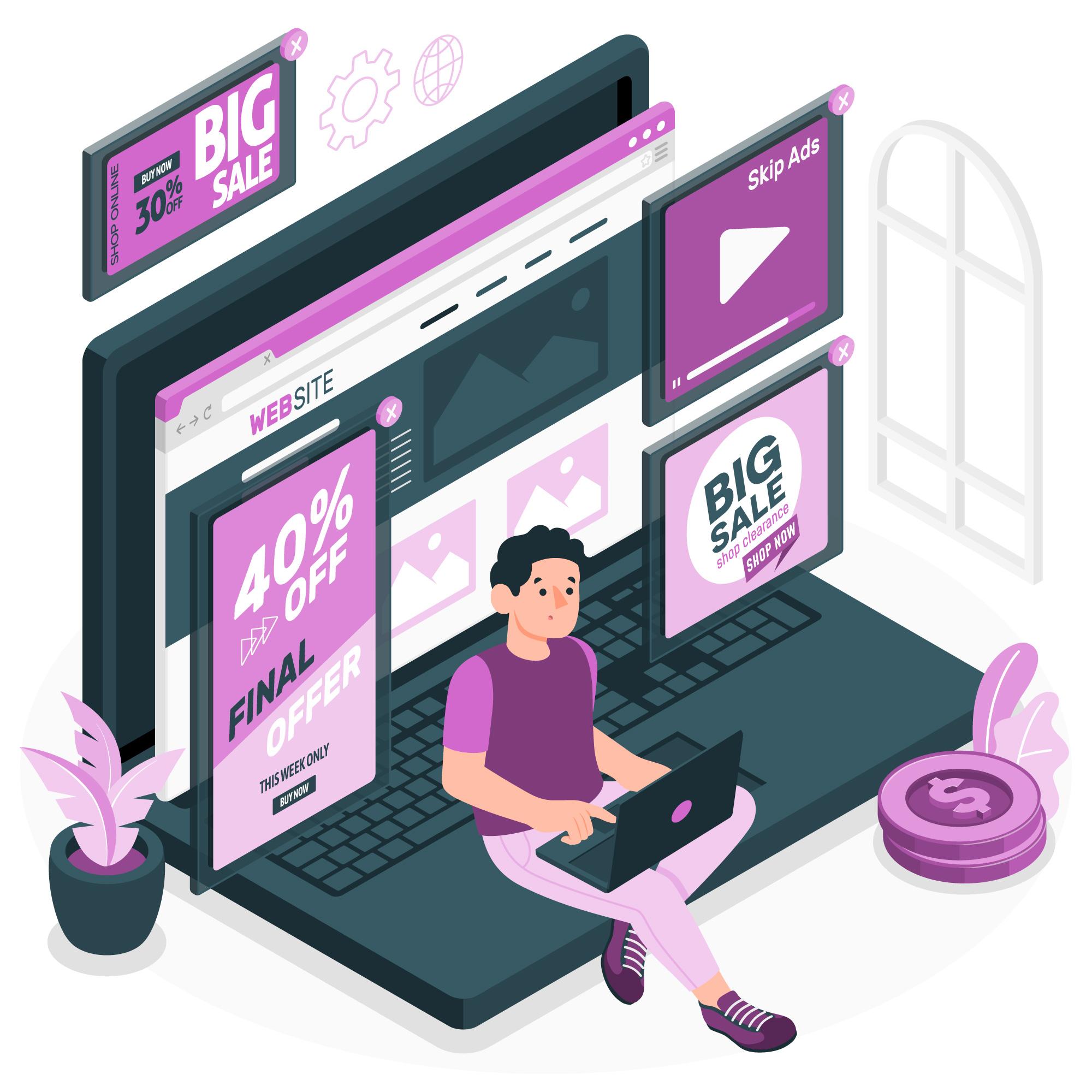
Native ads, short for “native advertising,” are a form of online advertising. It blends into the content and style of the platform on which they appear. Typically, advertisers mark these ads as “sponsored” or “promoted” to maintain transparency, but they integrate them so well that they often go unnoticed as promotional material. They can take various forms.
Native advertising examples include sponsored articles, in-feed social media posts, recommendation widgets, and more, depending on the platform and medium.
Here, we also share
native advertising examples?
In this example, the “Sponsored” article seamlessly blends with the other news articles, but it’s an advertisement. Users can click on it to learn more about the advertiser’s products or services.
Publishers and advertisers can customize Google AdSense‘s in-feed native ads to match their website’s style while transparently marking them as “Sponsored” or “Ad.”
The purpose of native ads is to deliver valuable and relevant information to the target audience. By appearing as natural content, sponsored content, partner content, and branded journalism can capture consumers’ attention without triggering ad-blockers or causing annoyance.
What Is Native Advertising And Why Is It Controversial?
Native advertising is a unique form of online advertising. It combines promotional content with non-promotional content around it without any problems.
Are you tired of traditional display ads that are intrusive and annoying? Native ads effortlessly blend in with the platform’s content. Also, you make them virtually indistinguishable from other editorial or user-generated content. With native ads, you can enjoy a more seamless and less disruptive browsing experience while still receiving relevant advertising content.
These ads aim to provide value to the audience while quietly promoting a product, service, or brand. They do this by being relevant to the context and not getting in the way. There can be many things, like sponsored stories, social media posts in your feed, recommendation widgets, and more.
Native Advertising Controversial
While native advertising offers several benefits, including higher engagement and improved user experience, it has also sparked controversy for several reasons:
- Transparency and Deception: One of the primary concerns is the potential for sponsored content, partner content, and branded journalism, ads to deceive users. When these adverts merge with the platform’s content, some consumers may confuse them for editorial content. This lack of transparency can erode trust and lead to skepticism among consumers.
- Ethical Concerns: Native advertising blends news, entertainment, and advertising, making it hard for consumers to understand its genuine aims, say critics. This compels you to consider the morality of changing information and the honesty of news or opinion websites.
- Regulatory Challenges: Native advertising challenges regulatory bodies and self-regulation within the advertising industry. Many countries have guidelines and rules to ensure transparency in advertising. However, enforcing these rules in native ads can be complex due to their subtle nature.
- User Experience: While native ads aim to enhance user experience by providing relevant content, there is a risk of oversaturation. Too many native ads on a site can make users tired or angry. In the end, this format for advertising becomes less successful.
- Impact on Journalism: Native advertising’s popularity has led to concerns about its impact on traditional journalism. Some worry that media outlets rely more on sponsored content for revenue.
Note: So, finding ways to do this balancing act in native advertising challenges involves making cool ads that catch your eye without breaking the trust between advertisers and the audience.
Types Of Native Ads
There are many native ad platforms, each designed to fit seamlessly into different digital platforms and user experiences. Here are some common types of native ads.
- In-Feed Native Ads: These ads appear within the content feed on websites, social media platforms, or news aggregators. They resemble regular posts or articles, typically labeled “sponsored” or “promoted.”
- Sponsored Content: A brand and a publisher collaborate to create sponsored content. It resembles the publisher’s regular content but is marked as “sponsored.” It can include articles, videos, or other forms of media.
- Recommendation Widgets: These widgets suggest related articles, products, or content within a website’s existing content. They are often found at the bottom of articles or on the sidebar, encouraging users to explore further.
- Custom Content Units: Custom content units are designed to match the style and format of a specific website or platform. They can include branded articles, interactive infographics, or other multimedia content.
- Social Media Ads: These ads appear in users’ social media feeds. It seamlessly blends with the organic content. Also, it is shared by friends and followed accounts. They can include promoted tweets, Facebook-sponsored posts, or Instagram ads.
- Search Engine partner content: These ads appear at the top of search engine results pages (SERPs) when users search for specific keywords. They are often marked as “sponsored” and are highly relevant to the user’s query.
- In-App Native Ads: Promoted posts, videos, or interactive content can be within mobile apps as native ads. They are integrated into the app’s interface and provide a non-disruptive user experience.
- Email Ads: Some email newsletters and marketing emails incorporate native-style ads. That aligns with the content of the email. These ads aim to be informative and relevant to the recipient.
- Branded Content Hubs: Brands may create content hubs or microsites featuring articles, videos, and other content. That aligns with their products or services. These hubs can serve as valuable resources for consumers.
- Podcast-sponsored content Ads: In podcasting, native ads are often integrated into the show’s content. Host-read advertisements and sponsored segments are examples of native ads in this medium.
So, these special ads can change themselves to help businesses reach their goals and connect with the right people.
Is Native Advertising Considered Marketing?
Yes, native advertising is considered a form of marketing. It’s a strategy within the advertising and marketing field. That focuses on delivering promotional messages. It blends without interruption with the non-promotional content on a particular platform. Native advertising aims to provide the audience with value, relevance, and engagement while subtly promoting a product, service, or brand.
Marketing encompasses various activities and strategies to promote and sell products or services. Native advertising is just one of the many tools in a marketer’s toolkit. We offer a unique approach to reaching and engaging audiences non-disruptively. Businesses and brands use it as part of their overall marketing efforts to connect with their target audience. Also, they achieve specific marketing objectives.
Benefits Of Native Advertising
Native ads offer several benefits compared to traditional advertising methods:
- Enhanced User Engagement: People are happier to connect with native ads. Because they don’t get in the way of the browsing experience.
- Improved Brand Perception: sponsored content, partner content, and branded journalism build trust as they provide valuable content. Users view them more favorably than intrusive ads.
- Increased Click-Through Rates: When native ads are done right, they can drive higher click-through rates (CTRs) than traditional banner ads.
- Native Ads vs. Banner Ads: Unlike banner ads, native ads don’t suffer from banner blindness. Users ignore banner-like elements on web pages.
So, native ads effectively allow businesses to reach their target audience while improving engagement, user experience, brand perception, and targeting capabilities.
What Does Native Advertising Include?
Native advertising is a broad term for many different ads and strategies that all try to fit in with a certain site’s content and user experience. Native advertising can include different things, but these are usually what it includes:
- Content Integration: Native ads seamlessly blend into the platform they appear on. It matches the format and style of the surrounding content.
- Relevance: These ads aim to provide relevant and valuable content to the target audience.
- User Experience: Native advertising prioritizes a positive user experience by being non-disruptive and engaging.
- Transparency: Native ads are typically labeled as “sponsored” or “promoted” to maintain transparency.
- Diverse Formats: Native ads can take various forms, such as articles, social media posts, videos, widgets, and more, adapting to different platforms and mediums.
- Brand Consistency: Even though native ads blend in with the platform’s content, they keep the brand’s message and name the same to keep the brand’s image consistent.
- Adaptability: Native advertising adapts to the evolving digital landscape, incorporating new technologies, formats, and trends to remain practical and relevant.
Native Ad Formats
Native advertising is popular in the marketing world. It refers to paid advertisements. There are two standard formats of native ads: sponsored and branded content.
Sponsored content
Advertisers create sponsored content to match the style and tone of the platform it appears on. It is designed to provide value and engage users rather than blatantly promote a product or service.
Branded content

Branded content is produced by the advertiser or in collaboration with content creators. It is typically focused on storytelling and evoking emotions, aiming to create a connection with the audience. Branded content can take various forms, such as videos, articles, podcasts, and social media posts.
Both sponsored and branded content have their unique advantages. They allow advertisers to reach a wider audience, build brand awareness, and establish credibility.
Note: Native advertising offers a creative and effective way for businesses to promote their products or services without being intrusive.
Successful Native Ad Campaigns
Let’s explore a few examples of brands we’ve nailed their native ad campaigns that helps with native advertising definition.
Case Study 1: Brand X’s Native Ad Success
Brand X, a fitness apparel company, partnered with a health and fitness blog to create informative articles about healthy living. These articles easily featured their products and links to their website. Result? Increased brand awareness and a boost in sales.
Case Study 2: Leveraging Native Ads for Product Launch
A tech startup, Company Y, used native ads to create buzz around their new app. They published articles on tech news websites discussing common problems their app solved. With strategically placed native ads, they gained a significant user base quickly.
Case Study 3: Maximizing ROI with Native Advertising
Company Z, an e-commerce giant, invested in native advertising to showcase its seasonal fashion collection. They created native ad campaigns on social media platforms that seamlessly blended into users’ feeds. Their ROI skyrocketed, thanks to the personalized and non-intrusive nature of native ads.
What Is Native Vs Traditional Ads?
Key Differences In Format And Delivery
Native ads are a type of online advertisement. It blends seamlessly with the content on a webpage. You should make it look like a normal part of the experience.
Traditional ads are usually displayed as banners, pop-ups, or pre-roll videos. It is clearly distinguishable from the content they accompany. They are usually more direct with their messages and try to get people’s attention with catchy words or eye-catching images.
Effectiveness And Impact Comparison
Native ads have gained popularity because of their ability to engage users without disrupting their browsing experience. Native ads are more likely to get the user’s attention and get a good response because they blend in with the rest of the material. Research has shown that native ads perform better regarding click-through rates, brand recall, and purchase intent than traditional ads.
Traditional ads, on the other hand, are still effective in reaching a broad audience and creating brand awareness. They are handy for high-impact campaigns and targeting specific demographics. Traditional ads often rely on repetition and strong visuals to leave a lasting impression on the viewers.
Note: The choice between the two depends on the brand’s objectives, target audience, and overall marketing strategy.
Native Ad Campaign Best Practices
Understanding Target Audience
To run a successful native ad campaign, it is vital to have a clear understanding of your target audience. This involves conducting market research and analyzing demographics, interests, and behaviors. By understanding your audience, you can create more personalized and relevant content that resonates with them. This will increase the effectiveness of your native ads and drive higher engagement and conversions.
Creating Compelling And Relevant Content
When it comes to native ads, content is key. Native ads should seamlessly blend into the user experience and provide valuable and engaging content. Ensure that your content aligns with the interests and preferences of your target audience. Use compelling headlines, captivating visuals, and concise messaging to grab their attention. Focus on providing helpful information, entertaining stories, or solving a problem. Creating content that adds value to the user makes you more likely to build trust and establish a positive brand perception.
Note: Following these best practices, you can create native ad campaigns that deliver results and drive business growth.
How Much Does Native Advertising Cost Per Month?
The amount that native advertising costs each month depends on many things, such as the platform, the audience, the business, and the campaign’s specific goals. But companies in the middle size range should set aside between $2,000 and $5,000 monthly for their budgets.
Here are some factors that can influence the cost of native advertising
- Platform: The cost of native advertising can differ significantly depending on where you run your ads. For instance, social media platforms like Facebook and Instagram may have different pricing structures than native advertising on premium news websites or content recommendation networks.
- Audience Size: The size and demographics of your target audience can affect the cost. Highly competitive or niche audiences may have different price points.
- Ad Format: The type of native ad format you choose, such as sponsored articles, in-feed posts, videos, or custom content units, can impact the cost.
- Bidding Strategy: Native advertising often involves bidding for ad placements. Your bid strategy, bid amount, and competition from other advertisers can influence costs.
- Ad Quality: The quality and relevance of your ad content can impact your advertising costs. Ads that perform well and engage users may offer better value for your budget.
- Campaign Goals: Your advertising objectives, whether brand awareness, lead generation, website traffic, or conversions, can affect your budget allocation and, consequently, the cost.
- Geographic Targeting: If your campaign targets specific geographic regions, the cost can vary based on the competitiveness of those markets.
- Duration: The length of your advertising campaign also plays a role in determining the monthly cost. Longer campaigns may have different pricing structures.
Note: To determine the exact cost of native advertising for your specific campaign, you need to work with marketing methods and set a budget based on your goals and target audience.
How Do You Spot Native Advertising?
The purpose of native advertising is to blend in with the content on a site, so it’s challenging to spot first. However, several clues can help you identify native ads:
- Disclosure Labels: Look for labels such as “Sponsored,” “Promoted,” “Advertisement,” or “Paid Content.” We often place these labels near or within the native ad to indicate that it’s promotional content.
- Formatting: Native ads typically match the formatting and style of the surrounding content, but there might be subtle differences. Pay attention to fonts, colors, or design elements that seem slightly off the regular content.
- Unfamiliar Brand or Source: If the content is from a new brand or source you haven’t encountered on the platform before, it could be a native ad. Established publications and websites are more likely to feature recognizable brands.
- Content Quality: Native ads often strive to provide valuable or informative content to engage users. If the content appears high quality but doesn’t align with the platform’s typical content, it might be a native ad.
- Inconsistencies: Look for inconsistencies in the style or tone of the content. Native ads may sometimes have a promotional tone or a call to action. It distinguishes them from regular content.
- User Comments: Check user comments or interactions with the content. Users may sometimes point out that a particular content is an ad or express skepticism about its authenticity.
- Context: Consider the context in which the content appears. If it seems out of place or irrelevant to the platform’s usual topics, it could be a native ad.
- URL or Source: Examine the source of the content by checking the URL or the website it’s hosted on. If it redirects to a landing page or a brand’s website, it’s likely an ad.
- Third-Party Tools: Some browser extensions and tools can help identify native ads by highlighting or marking them on web pages.
Future Trends In Native Advertising
- Artificial Intelligence and Native Ads: AI will enable better targeting and personalization of native ads. It makes them more effective.
- Video and Interactive Native Advertising: Video content and interactive elements will become more prevalent in native ads.
- Native Ads in Emerging Technologies: As new technologies emerge, native ads will adapt to fit these platforms.
- Predictions for the Future of Native Advertising: We expect native ads to continue evolving and playing a significant role in marketing.
does native advertising include a sales pitch?
Yes
The Bottom Line
Hopefully, you understand what are native ads. Native advertising has emerged as a potent force in digital marketing. It smoothly merges promotional content with the user experience. Its remarkable growth and effectiveness underscore its value to businesses. While challenges like transparency and brand alignment exist, successful native advertising offers enhanced engagement, brand perception, and click-through rates.
Understanding the target audience and creating compelling content is pivotal for success. As AI, video, and emerging technologies continue to shape the marketing landscape, native advertising is poised to evolve and maintain its significance. It remains a hidden gem for businesses seeking effective, non-disruptive ways to engage their audience.
We’ve examined the various types of native ads, from in-feed native ads to sponsored content, and how each format serves specific marketing goals. Additionally, we’ve discussed the benefits of native advertising, such as enhanced user engagement, improved brand perception, and increased click-through rates.
If you require native advertising services, don’t hesitate to contact Marketing Methods. We’re here to help you reach your goals.
